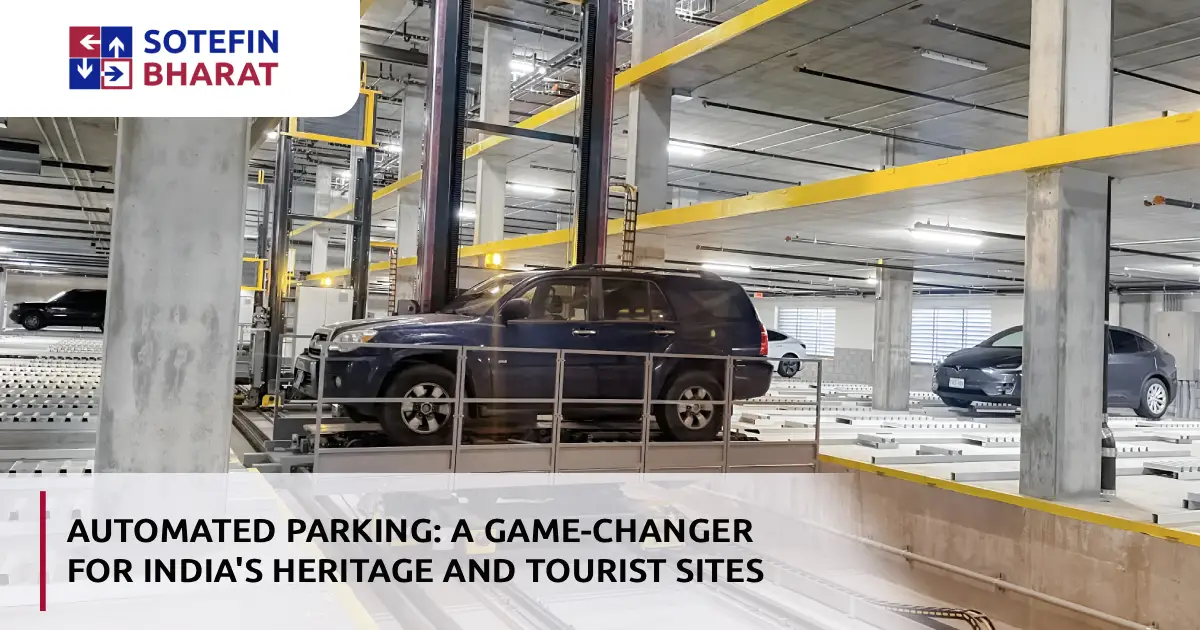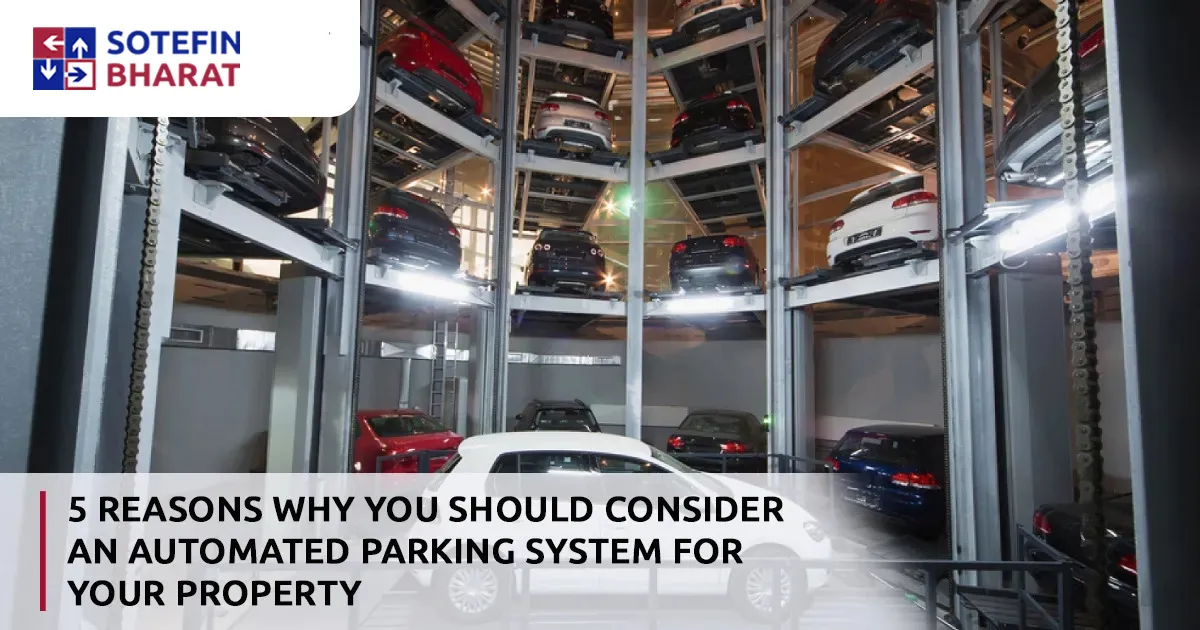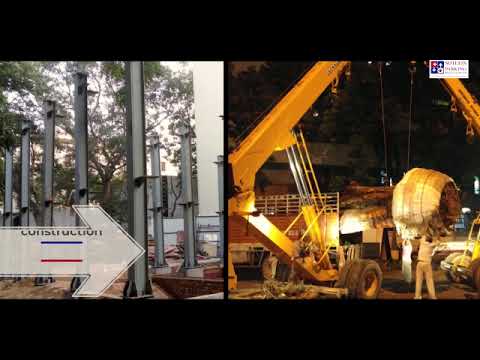
India, a land steeped in history and vibrant culture, boasts an unparalleled collection of heritage sites and tourist destinations that draw millions annually. From the majestic Taj Mahal to the intricate temples of Khajuraho, these architectural marvels are pillars of our national identity and vital economic drivers. However, the burgeoning tourism and urbanisation bring with them a significant challenge: parking. The traditional approach to parking, demanding expansive surface areas, often clashes with the preservation of historical aesthetics and the limited availability of prime land around these sensitive zones. This is where automated parking systems (APS) emerge not just as a convenience but as a crucial, transformative solution for India’s cherished heritage.
The Elephant in the Room: Parking Challenges at Heritage Sites
The sheer volume of vehicles at popular Indian tourist destinations is staggering. Imagine the chaotic scenes outside iconic landmarks, cars jostling for space, illegal parking eating into pedestrian zones, and the constant hum of engines detracting from the serenity of ancient structures. As per Sotefin Bharat, it isn’t just an inconvenience; it’s a multi-faceted problem:
1. Space Scarcity: Historical sites are, by nature, often located in densely populated or environmentally protected areas where expanding conventional parking lots is simply not feasible. The land around monuments is often earmarked for conservation or is simply too valuable for sprawling asphalt. For instance, the Supreme Court of India has previously intervened in matters concerning parking near the Taj Mahal, emphasising the need for visitors to walk rather than have extensive parking right at the monument, highlighting the delicate balance between accessibility and preservation.
2. Aesthetic Degradation: Large, open-air parking lots are an eyesore, disrupting the visual integrity of historical landscapes. They introduce an incongruous modern element that clashes with the ancient architecture and natural beauty, diluting the very experience tourists seek.
3. Traffic Congestion and Pollution: The endless search for parking contributes significantly to urban traffic congestion and increased vehicular emissions. A 2017 study by the Indian Institute of Management Bangalore estimated that commuters in major Indian cities spend an average of 15-30 minutes daily searching for parking. This wasted time translates to higher fuel consumption and, crucially, a greater carbon footprint, impacting the air quality around sensitive heritage structures.
4. Security Concerns: Traditional parking lots, with their open access, can pose security risks to vehicles and visitors alike.
Automated Parking: A Modern Marvel for Ancient Wonders
Automated parking systems offer a sophisticated and sustainable answer to these pressing issues. Think of them as high-tech car vending machines that stack vehicles vertically, often underground or within compact structures, eliminating the need for vast expanses of land, ramps, and driving aisles.
Here’s how they are a game-changer:
1. Maximised Space Utilisation: This is the most compelling advantage. APS can accommodate a significantly higher number of vehicles in a much smaller footprint compared to conventional parking. Sotefin Bharat studies show that automated parking systems require approximately 60% smaller area and 50% smaller volume to park an equivalent number of cars. For a country like India, where land is a premium, especially in historical precincts, this translates into invaluable real estate freed up for green spaces, pedestrian zones, or even additional visitor amenities. Imagine a prime Mumbai location, previously fitting 50 cars, now housing 150-200 cars using a tower parking system within the same area.
2. Preserving Aesthetics: By moving parking underground or into aesthetically designed, compact structures, APS minimises visual intrusion. The ground level can be transformed into pedestrian-friendly plazas, landscaped gardens, or open spaces that complement the historical surroundings, enhancing the overall visitor experience and preserving the grandeur of the monuments. This aligns perfectly with the ethos of heritage conservation, where the focus is on showcasing the monument itself, not its supporting infrastructure.
3. Reduced Congestion and Emissions: With automated systems, drivers simply drop off their cars at an entry bay, and the system takes over. This eliminates the need for vehicles to circle endlessly in search of a spot, drastically reducing traffic congestion near heritage sites. Consequently, idling time is cut down, leading to a significant reduction (by 60-80%) in fuel consumption and harmful emissions. This is a vital step towards improving air quality in culturally significant areas, often battling pollution concerns.
4. Enhanced Security: Automated parking systems offer a superior level of security. Vehicles are stored in a controlled environment, with access limited to authorised personnel. This significantly reduces the risk of theft, vandalism, and minor parking lot damages like scrapes and dents. Advanced features like surveillance cameras and license plate recognition systems further bolster safety.
5. Improved User Experience: For tourists, automated parking means a hassle-free experience. No more frustrating searches for parking, no more long walks from distant lots. Cars are retrieved efficiently, often via a kiosk or mobile app, providing a modern and convenient service that enhances their visit.
India’s Embrace of Smart Parking: Early Steps and Future Prospects
While the widespread implementation of smart parking solutions at heritage sites is still evolving, India is increasingly recognising their potential. Cities like Jaipur are leading the way. The Nagar Nigam Jaipur Heritage (NNJM) is implementing comprehensive smart parking solutions, including 1000 on-street sensor-equipped slots and smart parking for four-wheelers in 8 closed parking lots, along with a user-friendly mobile application. This initiative, while not exclusively for heritage sites, demonstrates a clear move towards intelligent parking management that can be replicated and adapted.
Private player like Sotefin Bharat is actively involved in designing, manufacturing, and delivering innovative automated parking solutions across India, from high-rise residential buildings to commercial hubs in cities like Mumbai, Delhi-NCR, Bengaluru, and Chennai. The ‘Design, Build, Finance, Operate and Transfer’ (DBFOT) model, a public-private partnership, has also seen success, as exemplified by a project in Jaipur where a multi-level parking facility with a capacity for 400 cars was developed, freeing up 40,000 sq. ft. of street parking for green spaces. This model can be particularly effective for heritage sites, allowing for private investment and expertise while serving the public good.
The Road Ahead: Challenges and Opportunities
While the benefits are clear, the path to widespread adoption of automated parking at Indian heritage sites isn’t without its challenges:
1. Initial Investment: The upfront cost of installing APS can be higher than traditional parking solutions. However, the long-term benefits in terms of land value, environmental impact, and enhanced tourism experience often outweigh this initial outlay.
2. Maintenance and Technical Expertise: These sophisticated systems require specialised maintenance and skilled technicians, necessitating training and infrastructure development.
3. Public Perception and Acceptance: Some users might initially be hesitant about entrusting their vehicles to an automated system. Public awareness campaigns and transparent demonstrations of reliability will be crucial.
4. Integration with Existing Infrastructure: Seamless integration with existing traffic management systems and urban planning frameworks is essential for optimal functioning.
Despite these hurdles, the imperative to preserve India’s rich heritage while accommodating growing tourism demands makes automated parking an increasingly attractive and necessary investment. By strategically integrating these intelligent solutions, India can not only resolve its urban parking woes but also ensure that its timeless monuments continue to inspire awe and wonder for generations to come, unmarred by the trappings of modern vehicular congestion. The future of parking at India’s heritage sites is vertical, automated, and beautifully integrated, paving the way for a more sustainable and enriching visitor experience.
Driving India’s Smart City Evolution with Sotefin Bharat’s Automated Parking Solutions
Sotefin Bharat is at the forefront of transforming urban development in India, spearheading the adoption of automated parking solutions built on advanced Swiss engineering. As India’s cities rapidly evolve, the transition from traditional to automated parking isn’t just an option—it’s a critical need for creating smarter, more efficient urban spaces.
We deliver intelligent, space-saving, and sustainable parking systems that are essential for modern city infrastructure. By collaborating closely with real estate developers and government organisations, Sotefin Bharat is making this vital transition seamless, ensuring our cities become smarter and more livable.
Conclusion
Automated parking systems offer a compelling and timely solution to one of the most persistent challenges facing India’s invaluable heritage and tourist sites. The delicate balance between accommodating a growing influx of visitors and preserving the sanctity and aesthetic integrity of these historical treasures demands innovative approaches. By embracing automated parking, India can liberate precious land currently consumed by sprawling conventional lots, mitigate crippling traffic congestion, reduce pollution, and enhance the overall visitor experience. While initial investments and technological adaptations present hurdles, the long-term benefits of conserving our heritage, fostering sustainable tourism, and creating more liveable, breathable spaces around our cultural landmarks are immeasurable. Automated parking is not just about finding a spot for a car; it’s about safeguarding India’s past for future generations, ensuring that the majesty of our monuments remains the focal point, unmarred by the demands of modern mobility. It’s a strategic move towards a smarter, greener, and more respectful future for India’s incredible heritage.









